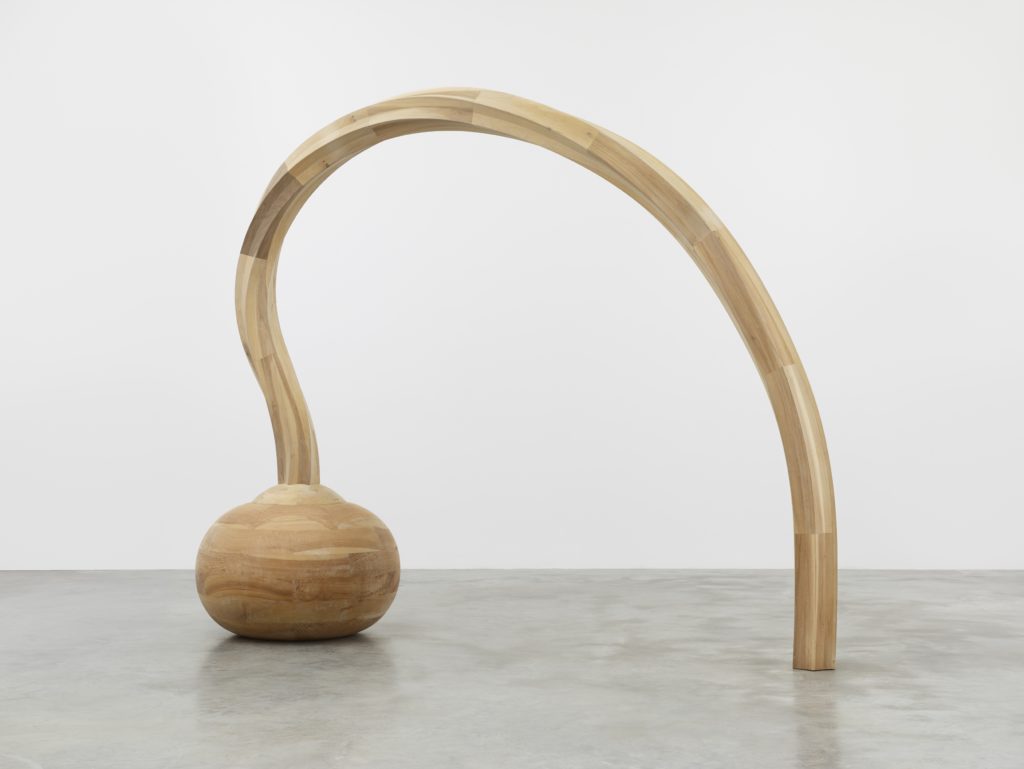[ad_1]
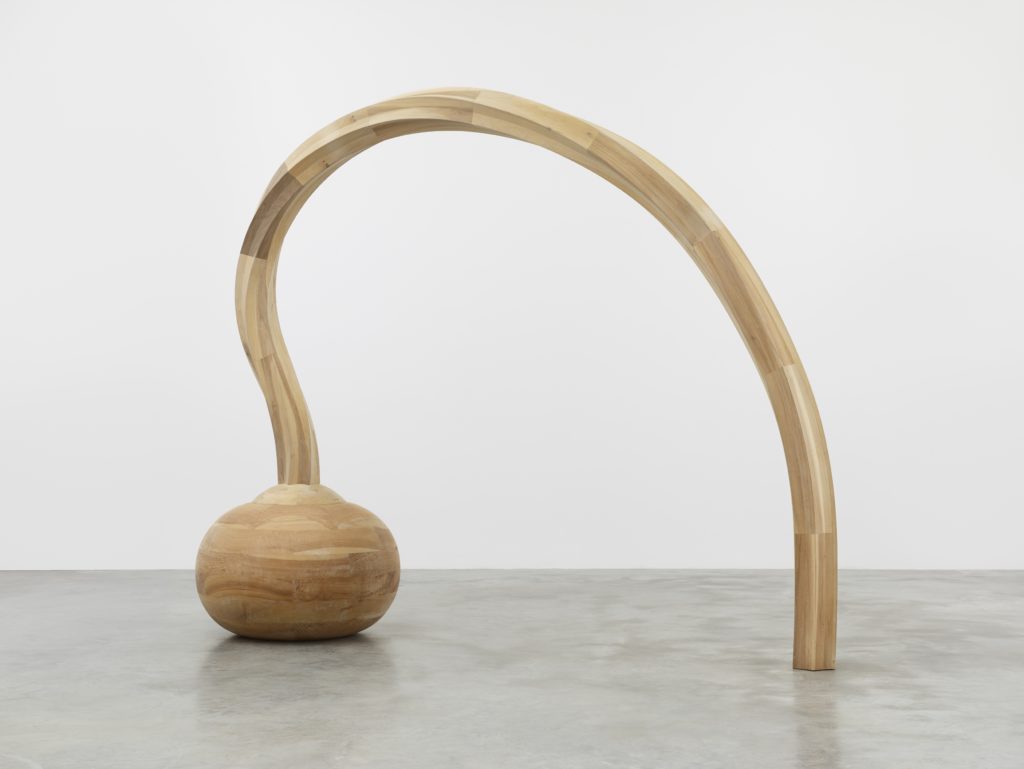
Martin Puryear, Question, 2010.
RON AMSTUTZ
In Italy at the moment, Martin Puryear is representing the United States at the Venice Biennale, where his national pavilion has been one of the most well-received presentations at the exhibition. With Puryear’s U.S. Pavilion, now on view, we took a look back through our archives and pulled excerpts from reviews published by ARTnews that survey the artist’s career. The excerpts below chart Puryear’s rise from being a “sculptor’s sculptor,” as Steven Henry Madoff put it in 1986, to an international phenomenon known for his unique ability to synthesize Minimalism, modernism, and non-Western styles. —Alex Greenberger
“Washington, D.C.: Draftsmanship and woodmanship”
By Benjamin Forgey
January 1978
Wood simply cannot be overlooked, as steel sometimes can, or bronze, or even stone. This in part explains its unpopularity with modernists in the mainstream; wood simply has to be crafted. Two interesting recent exhibitions dealt, among other things, with precisely this condition of the material. One was the solo show of Martin Puryear’s recent work [at the Corcoran Gallery of Art]. Puryear, working in a recognizably post-formalist vocabulary, makes wood itself a central focus of this artistic activity, especially its associations with hard, necessary physical labor. In itself this is not assurance of quality; the least successful pieces in this show, Oldenburgian exaggerations, were as hard to make as the others. The best pieces, consisting of six elements attached to the wall (they could, alternatively, be displayed as discrete units), were extremely linear and beautiful to look at, and they called forth reactions on multiple levels (functionless, they looked farm-functional; hard to do, they looked “easy” from afar; “unnatural” in being partially constructed and in all ways worked upon, they looked almost like found objects, and so on). On all levels, however, the reactions had to do with their physical existence as wood objects.
“Washington, D.C.: Aunt Evelyn’s letters”
By Jo Ann Lewis
March 1980
Martin Puryear’s vast talent is less of a secret in New York than it is here, given his recent inclusion in major exhibitions at both the Guggenheim and the Whitney museums. His latest show at the Protetch-McIntosh Gallery, however, would seem to indicate that his light no longer flickers under a barrel here. It was a sellout.
Puryear is a master at conjuring a feeling, a mood, with very minimal means. This show was devoted entirely to large wall-hung circles or loops of various sorts, all made from a variety of exotic woods which were bent, carved, constructed or coaxed into large hoops, each exuding its own distinctive mood. Some are smooth, slinky and sensuous, others are slick and modern. Still other examples are ruggedly carved, polychromed and seemingly of primitive origin. Even in such a small show, it is clear that Puryear is a visual poet of the highest order.
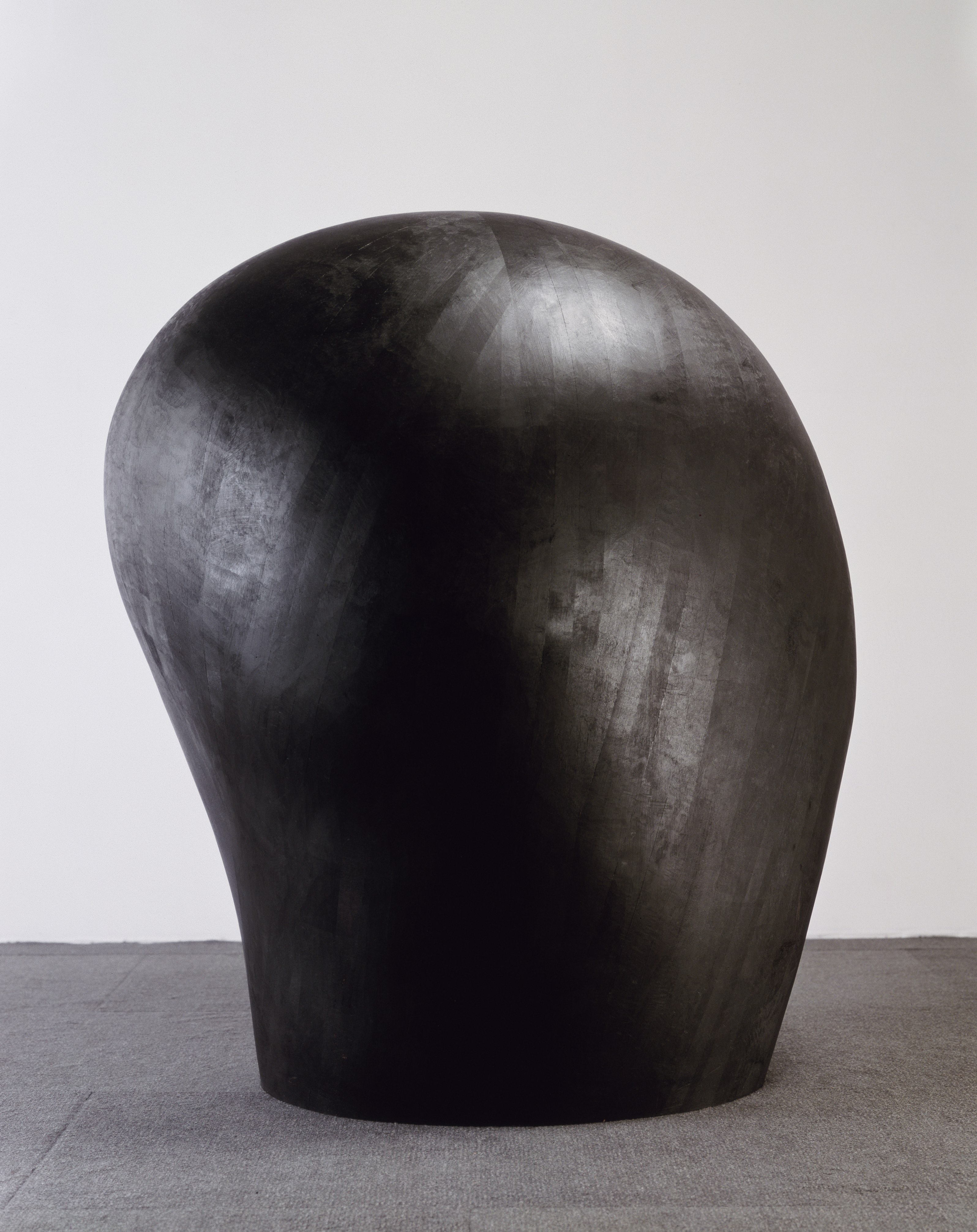
Martin Puryear, Untitled, 1997.
MUSEUM OF MODERN ART, NEW YORK
“Sculpture Unbound”
By Steven Henry Madoff
November 1986
“During Minimalism, I felt like a holdover from the craft tradition,” says Martin Puryear, a sculptor who has lived and worked in Chicago since the late ’70s. Puryear, 45, is considered a sculptor’s sculptor by his colleagues; and his work is collected by major museums. His distinctive art has its roots in traditional woodworking, which Puryear studied during a mid-’60s tour with the Peace Corps in West Africa. Further study took him to Stockholm’s Royal Academy of Art, where he became interested in Scandinavian craft. Then he went on to Yale for an M.F.A. in sculpture.
“When I first saw Donald Judd’s work, it cleared the air for me to do whatever I wanted. And I wanted purity and simplicity. But I couldn’t be as distant as Judd—the working process was essential to me. After Minimalism, there wasn’t much to continue with. You can only rarefy something so much before you have nothing left. And I’m really committed to objects,” Puryear says, emphasizing the word and pausing for the kicker, “not to dogma.” . . . Yet his work keeps an ironic edge. He is orbiting Minimalism, but he combines his reductive, abstract shapes with a rippled, definitely unmachined surface.
“Reviews: Martin Puryear at Art Institute of Chicago”
By Garrett Holg
February 1992
This 40-piece traveling retrospective (now on view at the Hirshhorn Museum and Sculpture Garden in Washington, D.C.) shut the book on sculptor Martin Puryear’s 12-year stay in Chicago, a time during which the artist achieved international acclaim. . . . Despite their large size, Puryear’s sculptures often allude to very private meditations. In the past he has constructed collapsible wood dwellings reminiscent of the yurt, the hut of the nomadic Mongols, as poetic metaphors for inner retreat. While none of these particularly powerful pieces was included in the show, unfortunately, such works as Sanctum and Bower share a similar feeling of fragile physical and psychological refuge. The former, although it offers an enclosed space of shelter, rests uneasily on the ground. The latter, with its open lattice framework, is disconcertingly ambiguous in its distinction between inside and outside. In these works the center become’s the artist’s focus. Yet ironically, for this truly eloquent sculptor, that center is almost always empty or hollow.
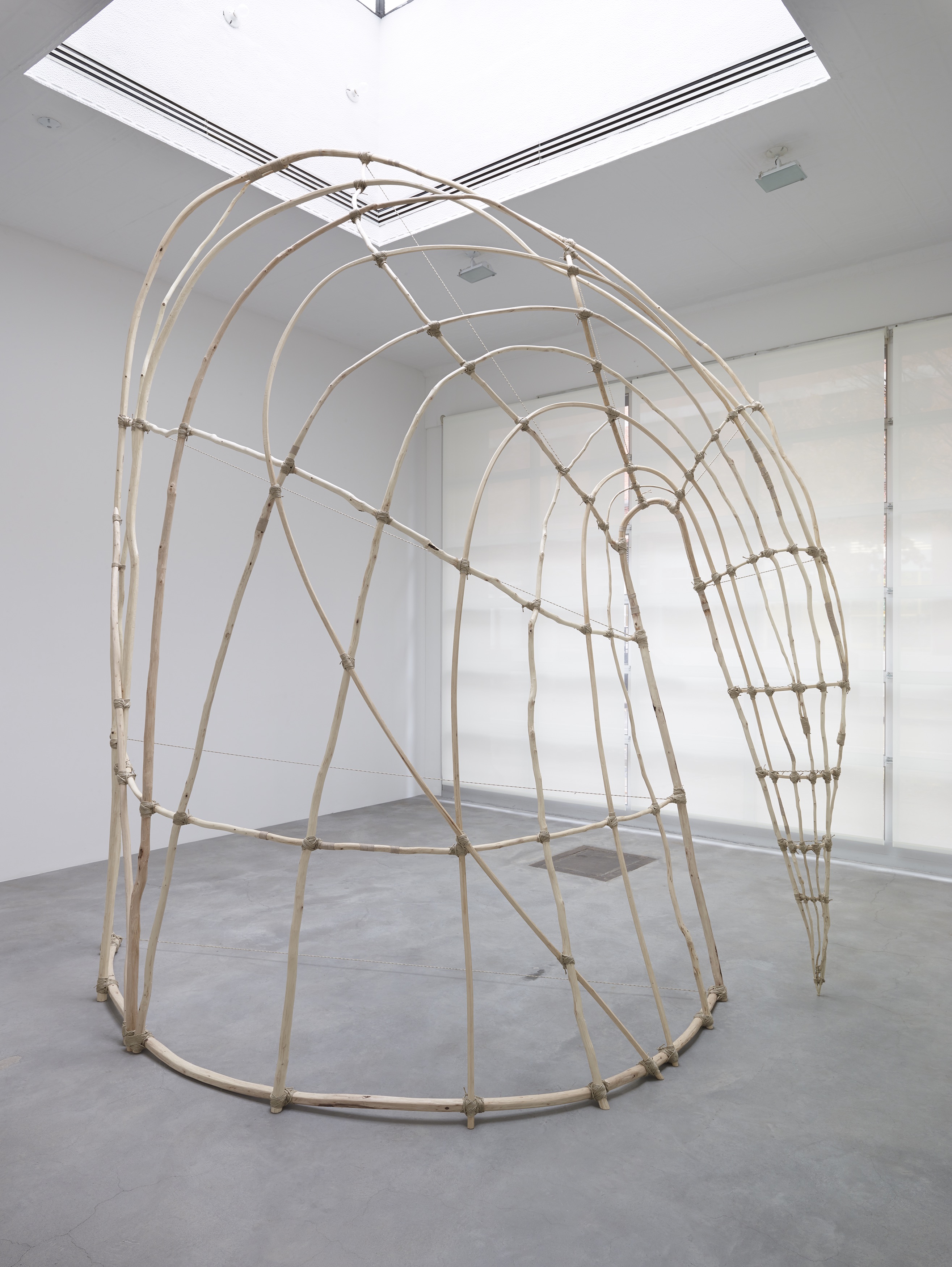
Martin Puryear, Untitled, 2014.
RON AMSTUTZ
“Brunhilde Stripped Bare”
By Lilly Wei
December 2001
Puryear’s works are rooted in the modernist canon—with a twist. His biomorphic abstractions are influenced by such sculptors as Brancusi and Arp, but they also go directly to modernist sources, to tribal and non-Western art. While more minimal than otherwise, his sculpture is not merely formal but double-dipped, mantled in symbolism and an array of postmodern readings. Brunhilde’s airy lattice of cedar and rattan—which also resembles a woven basket, a blown-up string bag, a vessel—is wholly open and wholly revealed. The inside is as visible as the outside, as if space had only been interrupted, lightly wrapped, and shaped—a reversal of the traditional notion of sculptures as mass, as solid, weighty form.
Puryear has said that he is interested in describing form without hiding interior space. He pointed out that he wanted to create a work that “strained at the skin” and had “internal expansion as though it were inflated, filled with something, like a filled bag, or an airship—like things that are inflated and are pushed from within.” The theme of insubstantiality—of imaginable forces—is repeated in the shifting pattern of shadows on the floor and surrounding walls that reimage the latticed construct as an ephemeral web, a delicate drawing that ebbs and flows with the light. The negative of the shadow paired with the positive of the structure is part of the rhetoric of opposition that makes up Puryear’s work, a kind of visual thesis and antithesis.
“Reviews: Martin Puryear at Museum of Modern Art, New York”
By Kim Levin
January 2008
With this retrospective, organized by John Elderfield, MoMA’s chief curator of painting and sculpture, we finally have a chance to make sense of the artist’s oeuvre, which began in the Post-Minimalist 1960s. It’s possible to connect Puryear’s work to Eva Hesse and the so-called Eccentric Abstractionists, as well as to Process Art and the early ’70s instinct of rejecting the strictness of the Minimalists and emphasizing the handmade, the crated, and the organic. . . .
The galleries are full of such finely considered works as Puryear’s imperfect rings (each addressing a formal conundrum) and the improbable extensions and elongated necks of other pieces, suggesting African wildlife and tribal sculpture. These allusions to Africa combine with references to European modernism (Brancusi, Arp, Le Corbusier) and with materials, such as rawhide, cow hair, knotty pine, wire mesh, and tar, imbued with social implications. Puryear has said that he tries “to make coherence out of things that are contradictory.” But, for him, “coherence is not the same as resolution.”
When we finally encounter C.F.A.O. (2006–7), perched on a wheelbarrow (it was Alexander Calder’s), with its reference to the colonial trading company Compagnie Française de l’Afrique Occidentale and its inside-out impression of a Fang mask (borrowed from a 1935 Walker Evans photograph), we know we have plumbed the depths of Puryear’s various and complex allusions.
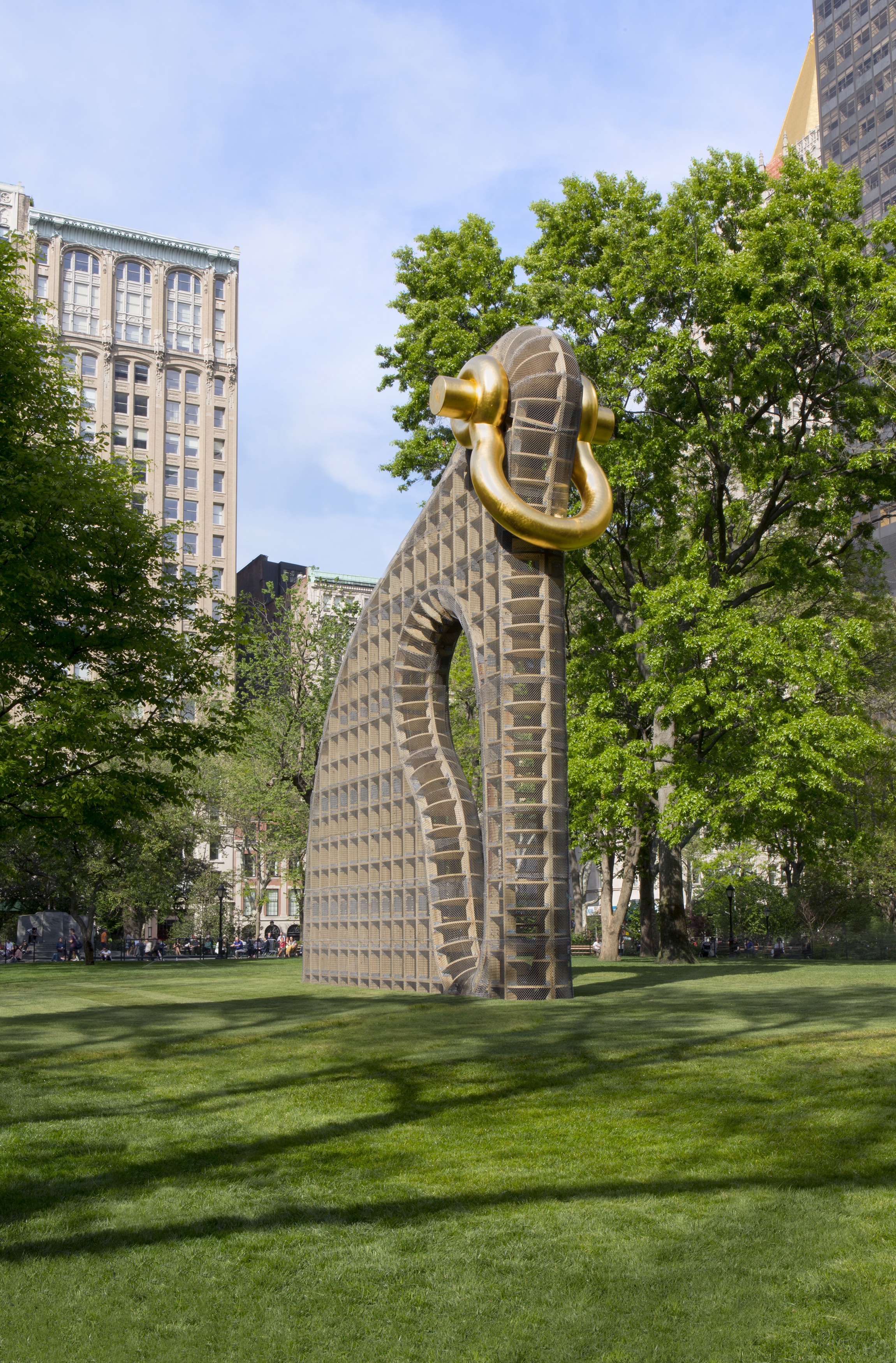
Martin Puryear, Big Bling, 2016, installation view at Madison Square Park,
New York.
SEAN LOGUE
“Face to Face: Martin Puryear at Smithsonian American Art Museum, Washington, D.C.”
By Roger Atwood
July 27, 2016
With nearly 100 works on paper including drawings, woodcuts, etchings, and preparatory sketches, this exhibition takes a bit of the mystery out of Martin Puryear’s gifts as a sculptor while, at the same time, it reveals his range and skill as a draughtsman. Titled “Multiple Dimensions,” the show gives us a great sense of the centrifugal force driving Puryear’s long career. Charcoals and woodcuts of children and animals he made as a Peace Corps volunteer in the mid-1960s in Sierra Leone, with their distilled forms, point the way to the sleek, meticulously crafted wood sculptures he made decades later (and which were the subject of a fine 2008 retrospective at the Museum of Modern Art).
Puryear’s sculptures did not emerge fully realized, as this important exhibition, organized by the Art Institute of Chicago, suggests. They were accompanied by years of experimentation on paper that yielded works of quiet power and grace in their own right. Many are deceptively simple. An untitled charcoal drawing of a seated infant girl from 1964–66, all smudges and shadow, draws startling emotional complexity out of a simple composition. Preparatory drawings for the sculpture Sanctuary (1982) show Puryear experimenting with subtle variations in the arrangement of the wooden stalk-like forms that hang sensually like legs from a wooden box.
Although focusing on paper, the show includes 14 mostly recent sculptures, many referring to race and the legacy of enslavement. Watching his ideas move from two dimensions to three, the viewer can see an innocent proposition mutate into a sinister vision. Shackled (2014), for example, is a jet-black, iron sphinx with a shackle piercing its head, a grim evocation of bondage. A series of earlier drawings and a wooden maquette appear as little abstract heavens—all flowing, curvaceous forms and orifices, and without the shackle.
[ad_2]
Source link

